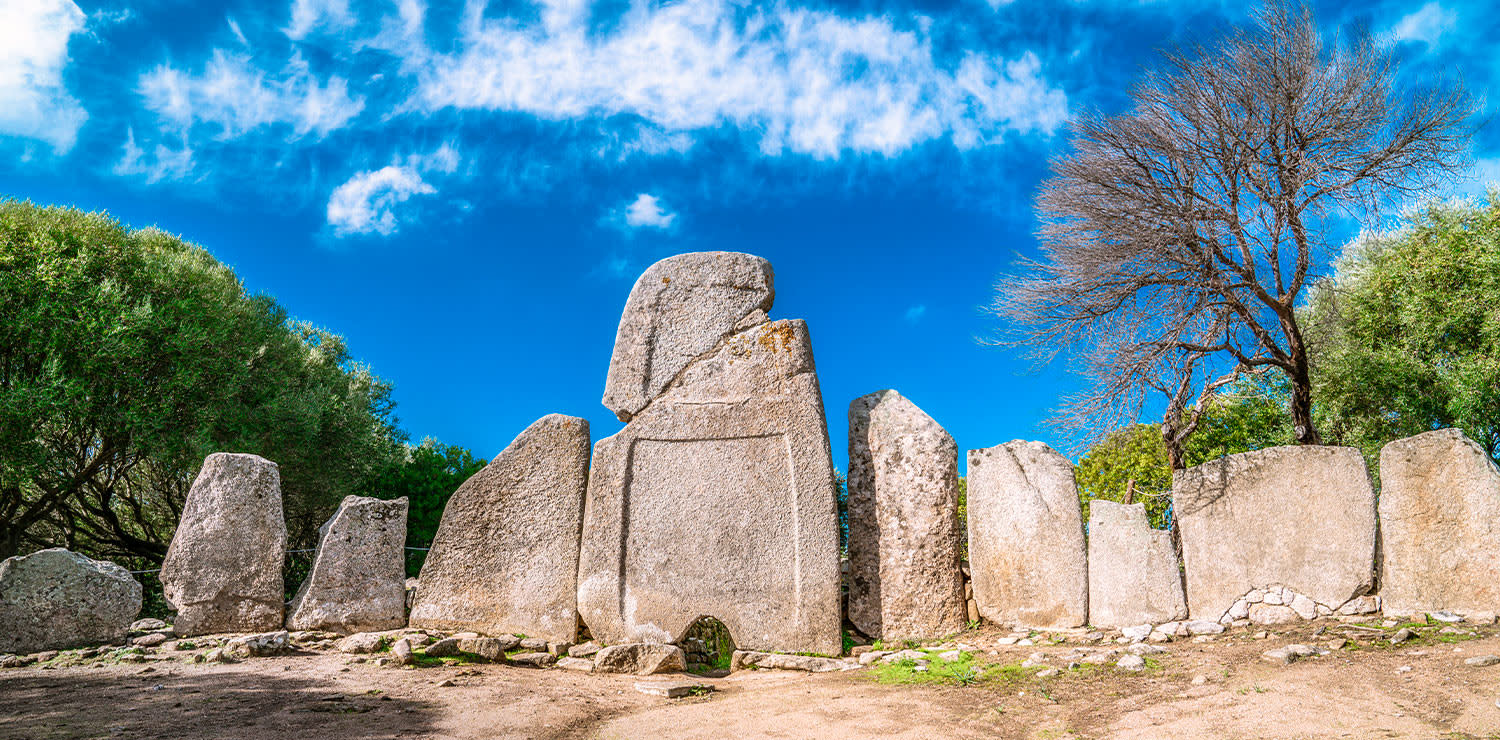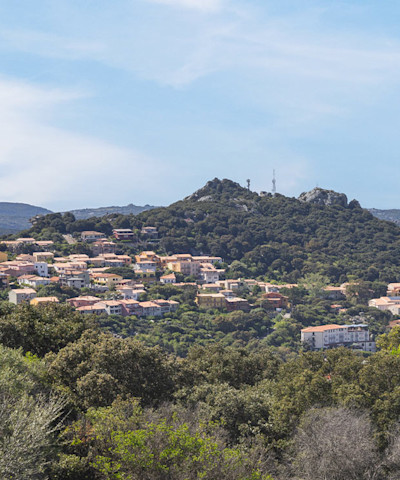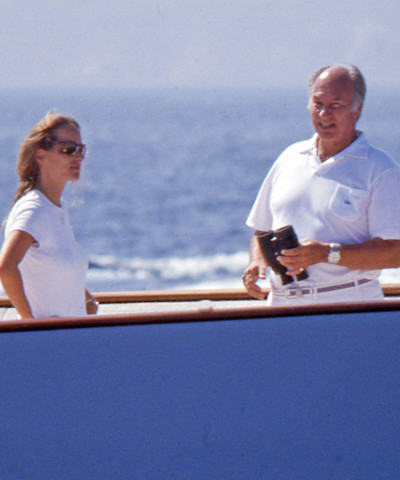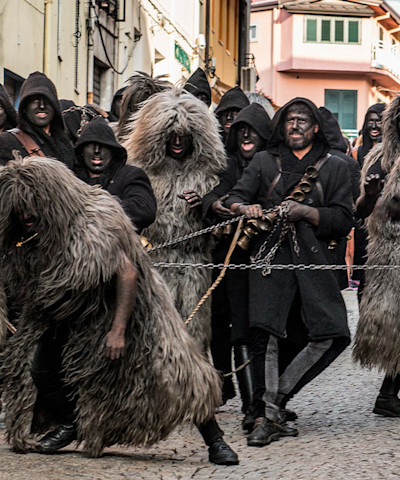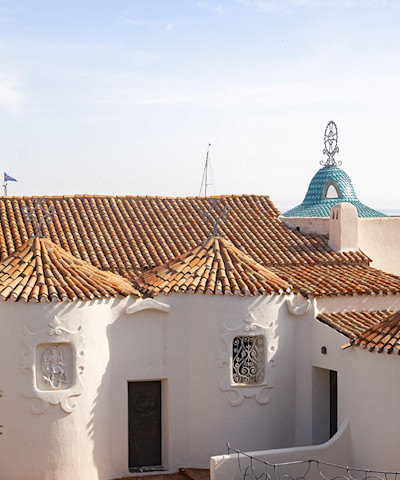Villages of Sardinia: the most beautiful ones to visit
Jewels rich in history, culture and natural beauty all to be discovered
Northern Sardinia is home to renowned towns famous for their centuries-old history and traditions, where religious rituals and folk beliefs intertwine and give rise to celebrations still in use today and a source of great tourist attraction. What are the villages not to be missed? Find out with you!
Luogosanto, the village of Alta Gallura between the sacred and the profane
Perched on the slopes of the granitic Monti Ghjuanni, the village of Luogosanto is populated by just under two thousand inhabitants, but its territory is rich in archaeological sites and is home to as many as 22 religious shrines. Its name, which derives from the Latin “Locus Santus,” perfectly explicates the spiritual nature of this Gallurese center, a pilgrimage destination in all seasons for thousands of people and believers. Its foundation dates back to the beginning of the 13th century with the arrival of the Franciscans, who planted a convent there, one of the first ones built with St. Francis alive. Today that structure, after careful restoration work, houses the Museum Natività Beata Vergine Maria, a documentation center of the Middle Ages in Gallura, which traces local historical-religious events and exhibits the ex votos donated over the centuries to the Madonna child. The basilica of Our Lady of Luogosanto, built in granite ashlars with Romanesque forms by the Franciscans and located in the center of the town, is dedicated to her. The church is linked to the cult of Saints Nicholas and Trano: it was erected on the spot where, according to tradition, Our Lady appeared to the friars to point out the relics of the two saints. The shrine has a Holy Door that is opened to pilgrims every seven years for an entire year. It is a concession Pope Honorius III made to the Franciscans in the 13th century for the discovery of the bodies of the two saints. The current Door was made in 1700 by Luigi Luchetti. Legend has it that the small statue of Our Lady inside the basilica was found inside a crate on a beach near Arzachena. All shrines still come alive today during the many religious rites celebrated throughout the year with processions, patronal festivals, country festivals and various commemorations. It is interesting to try your hand at an excursion through the country roads of the Luogosanto area, discovering historical testimonies such as the Medieval Palace of Lu Baldu, the small country churches and the ancient country dwellings, the stazzi, that were once at the center of the economic and social organization of northern Sardinia and today constitute the historical landscape of Gallura in the past, among agricultural fields, vineyards, cork oaks and granite outcrops. Don't miss Piero Mancini's vineyards, which offer a unique experience inside the Balajana estate, where a finely restored ancient Gallura stazzo stands. Each visitor is offered a guided tour to discover the 18 hectares of selected grapes. Also in the territory of Luogosanto, in a valley surrounded by ancient cork oaks, grow the vineyards of Cantina Siddùra. The winery, at the center of the estate, is perfectly underground in order to take advantage of the natural insulation provided by the soil. The estates can be visited and it is possible to participate in tasting tours with expert sommeliers.
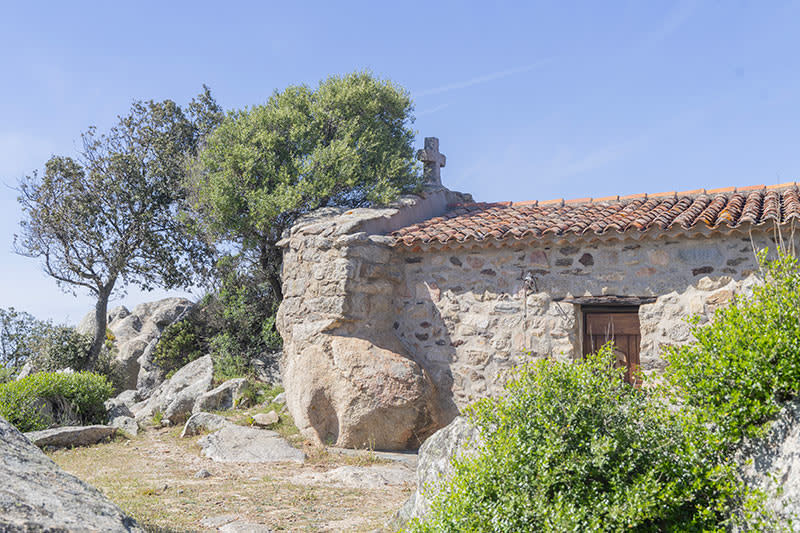 Luogosanto (ph. Dario Garofalo)
Luogosanto (ph. Dario Garofalo)San Pantaleo, the enchanted village set in the granites of Gallura
From its heights there are breathtaking views of the northeastern coast of Sardinia, just a few kilometers from some of the most beautiful and renowned beaches in the Arzachena area. The village of San Pantaleo, a hamlet of the municipality of Olbia on the Cugnana massif, is rightly called by all an “artists' village.” Here contemporary art is intertwined with Gallura's most authentic history and traditions. Founded at the end of the 19th century around a small church dedicated to San Pantaleo, then rural, it has seen its houses grow over time in a regular fashion, built according to the typical Gallura stazzo model. The village offers scenic views, also chosen and immortalized in numerous film scenes, including international ones. A big attraction is its Thursday market, which is set up in the main square in front of the church among the oleander beds during the summertime and attracts thousands of tourists and visitors. At its stalls it is possible to find even fine clothes, with a unique tailored cut, and to buy Sardinian food and wine products at zero kilometers. Numerous organized tours depart from the center of San Pantaleo for hiking and even biking in its territory. Numerous craft stores dot the center of the hamlet, as well as restaurants and eateries offering a traditional menu with contaminations of international cuisines. A must is a sunset aperitif at Café Nina, on the square, and at Da Giagoni restaurant for a unique dinner.
 San Pantaleo (ph. Dario Garofalo)
San Pantaleo (ph. Dario Garofalo)Aggius, the gallurese village nestled in the granite
Here the atavistic traditions of the most authentic Gallura, its colors and its most characteristic features find their fullest expression: we are in Aggius, a small village perched at the foot of a granite coast 514 meters above the sea. Just under 1,500 inhabitants populate this hamlet, where the care of the light-colored granite houses, a distinctive feature of this municipality rich in quarries, impresses visitors, as do the pretty balconies with ancient wrought-iron railings, adorned with ever-present vases of flowers. The economy of the town of Aggius is based on the quarrying and processing of granite stone, but the town is also renowned above all for its carpet production and, in general, for the art of weaving. The town has received the prestigious Orange Flag award from the Italian Touring Club, thanks to the characteristics of its historic center and the wonderful environmental context in which it is set, as well as its great and recognized hospitality. The MEOC, Ethnographic Museum named after Oliva Carta Cannas, houses original objects and machinery that tell the story of the history, culture and traditions of all of Gallura. Another unique town museum is the one dedicated to Bannerism, housed in the building of the old Magistrate's Court. Surrounding the village is a vast territory ideal for nature excursions, including the stazzi galluresi, typical ancient rural settlements, and archaeological sites. Of particular interest is the Izzana nuraghe, the largest in Gallura. Aggius is one of the few Gallura municipalities to have preserved the centuries-old traditions related to the rites of Holy Week. From Palm Sunday to Easter Resurrection, there are celebrations that take place according to spectacular traditions of Spanish origin. The typical Gallurese cuisine finds its maximum expression in the restaurants and agritourisms of the village: a must is the restaurant “Il Muto di Gallura,” the Agriturismo “Stazzu Coiga,” the Agriturismo “Vintura,” and the Wine & Food establishment “Il Mosto.”
Tempio Pausania, the town beloved by Fabrizio De André
A town of about 14,000 inhabitants in the center of Gallura, located at the foot of Mount Limbara, Tempio Pausania is also known as the “city of stone” for its characteristic historic center, composed of buildings and paving made of local granite, with long, charming tree-lined avenues. In its territory there are numerous parks and springs of icy water, considered beneficial and curative for health. In the town, in fact, ample space has been given to springs where one can get drinking water; the best known and most beautiful are those of Rinaggiu. Always a reference for the Gallurese hinterland, Tempio Pausania is a bishopric and court seat. Mentioned as Templo in Judicial times, it added the 'second' name in 1879 with reference to the ancient diocesan seat of Phausania. The town is famous for granite and cork working, to which the cork machinery museum is dedicated; for wines such as vermentino, karana, and muscat; and for “lu carrasciali timpiesu,” allegorical carnival par excellence, an event that has a hundred thousand attendees each year. Included in the festival is lu palu di la frisgiola, an equestrian joust starring a typical carnival sweet; another typical sweet is lu acciuleddu 'e meli. Li casgiatini are the Easter sweets, while papassini are the Christmas ones. Among the dishes 'reigns' suppa cuata. The highlights of Holy Week are the Via Crucis and lu Sgraamentu. In August the patron saints St. Paul and the Virgin of Buoncammino are celebrated. Genoese singer-songwriter Fabrizio De André chose it as a place of the heart. It was back in 1975 when the artist, together with his partner Dori Ghezzi, bought the Agnata estate in the countryside of Tempio. One hundred and fifty hectares mixed of woods, pastures and crops, with an old shepherds' farmhouse, where they set up a farm with dairy cow breeding. At the time, L'Agnata was a semi-abandoned stazzu, with the typical Gallurese granite farmhouse on two levels, dating from the late 19th century and nestled in a forest of evergreen oaks. Today L'Agnata is a well-known boutique hotel with a restaurant serving typical Gallurese cuisine. (To find out what to do, what to see and where to eat in Tempio Pausania, click here)
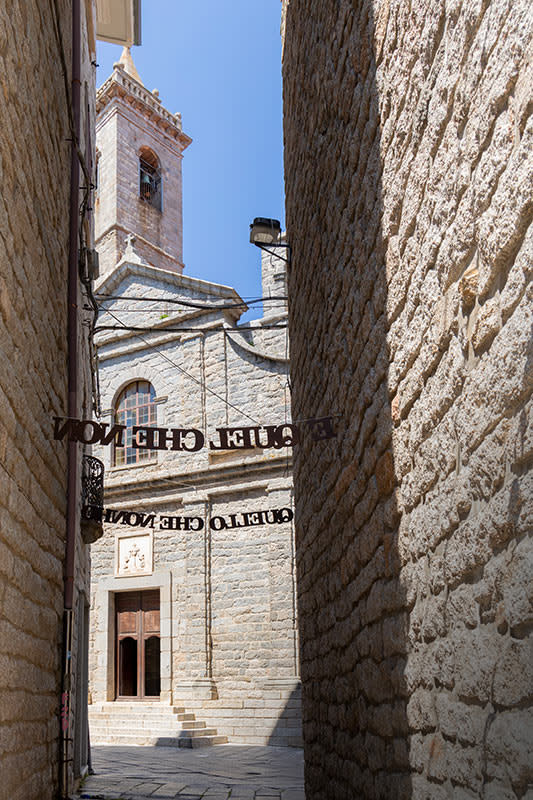 Tempio Pausania (ph. Dario Garofalo)
Tempio Pausania (ph. Dario Garofalo)Cannigione, the seaside village
Just a 20-minute drive from Porto Cervo, we find Cannigione, a perfect location for spending a day at the beach, enjoying the sun and swimming in clear waters. Cannigione beach offers a crystal clear sea with indigo hues and an expanse of white sand, ideal for families thanks to its shallow waters. Near the village of Cannigione, there are bars and restaurants, as well as the possibility of renting umbrellas and beach chairs. Another beach in the area is Mannena, one of the largest in Arzachena. With its clear, pristine waters, it offers a peaceful atmosphere that is never too crowded. Here, too, there are services and points for renting sunbeds and umbrellas.
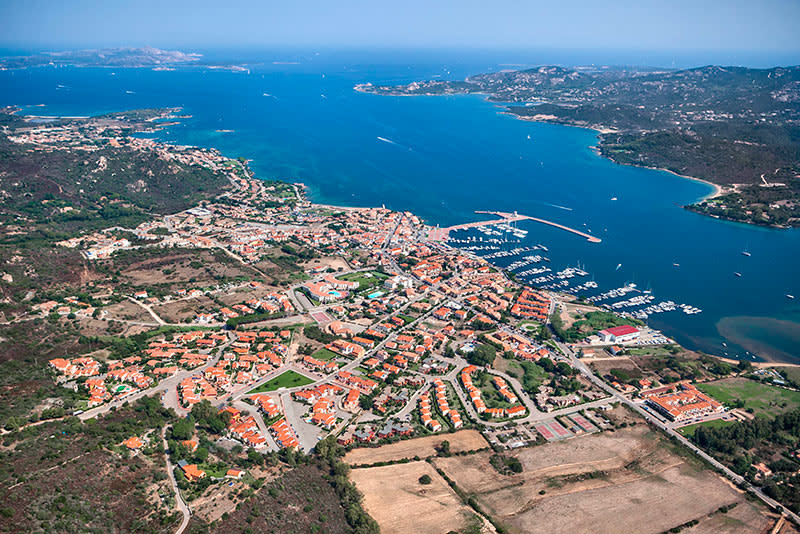 Cannigione
CannigioneArzachena, the cradle of gallurese history
Located in the Gallura region, Arzachena is a small town in Sardinia that combines fascinating landscapes, archaeological sites to visit and beaches with beautiful crystal clear waters. Sites of interest include the Tombs of the Giants, impressive funerary structures dating back to the Nuragic civilization, and the Nuraghe Albucciu, one of the stone towers symbolic of ancient Sardinian culture. The town is also home to numerous prehistoric settlements, including the Tempietto di Malchittu, making this area a true open-air museum. The center of Arzachena, with its cozy squares and narrow stone streets, retains the typical atmosphere of Sardinian villages while offering a wide range of services, restaurants, and activities for visitors. From here, you can explore the mountainous interior of Gallura, characterized by fascinating granite landscapes and lush Mediterranean scrub, or set out to discover the wonders of the Maddalena Archipelago, a protected natural paradise. It is only a 20-minute drive from Porto Cervo and has become increasingly popular and beloved over the years, thanks to its strategic location that allows visitors to stay there and visit other resorts in close proximity. Click here to find out what to do, what to visit, and where to eat in Arzachena!
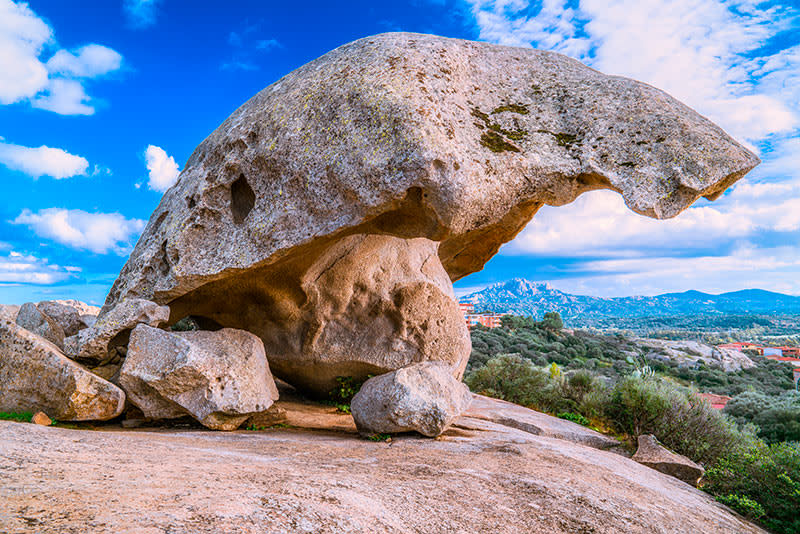 Il Fungo
Il FungoPoltu Quatu, the hidden fjord of northern Sardinia
Situated between two of Sardinia's most exclusive destinations, Baja Sardinia and Porto Cervo, Poltu Quatu, which means hidden harbor in Sardinian dialect, is an elegant hamlet composed of luxurious white villas that are built around a harbor at the end of a long, narrow fjord. The natural channel that gives life to Poltu Quatu is surrounded by granite walls covered by dense vegetation, which hide the village from view from the outside. This charming resort, ideal for visitors who enjoy privacy, is open to all, even if only for a stroll through the village's narrow streets and boats moored at the harbor. For diving enthusiasts, Poltu Quato is ideal for discovering the wonders of the seabed. Among the activities we recommend not to miss: whale & dolphin watching, or observing dolphins in their natural environment. But it also offers many cultural attractions and attracts visitors for the area's natural beauty, elegant shopping and vibrant social life.
Baja Sardinia, a boating paradise
Just 4 km from Porto Cervo, in the municipality of Arzachena, lies Baja Sardinia, a true paradise for those seeking relaxation and fun. Founded in the 1960s by the Gentili family, today it is a perfect destination for those who want to enjoy dreamy beaches and a lively nightlife. Baja Sardinia is the ideal starting point for boat trips to the islands of Caprera and La Maddalena. Among the beaches not to be missed, Cala Battistoni stands out for its fine white sand, while Spiaggia Tre Monti offers a sheltered and quiet setting. Not far away is Cala dei Ginepri, uncrowded even in the high season, and the Spiaggia di Capriccioli (Capriccioli Beach), immersed in a suggestive setting of pink granite. About 15 km away, the beautiful beach of Liscia Ruja is a must-see. The bathing establishments in the area are equipped for windsurfing, sailing, kitesurfing and scuba diving. The Arzachena area also offers trekking routes in the unspoilt nature of Gallura, perfect for adventure lovers. For families, the Aquadream Aquatic Park offers guaranteed fun for the little ones.
Slightly further away, about a 2-hour drive from Porto Cervo, Castelsardo and Bosa are worth a stop.
Castelsardo, the beauty of the medieval village
For those who want to enjoy an enchanting coastline and explore a piece of history that has characterized the island, the medieval town of Castelsardo, in the province of Sassari, is well worth a visit. Nestled on a promontory overlooking the center of the Gulf of Asinara, Castelsardo is a town whose territory is rich in natural beauty, beautiful inlets and bays, as well as a characteristic port. Handicrafts and typical food and wine products make it a popular tourist resort. Its beaches are worth visiting: Le Celestine, Stella Maris, La Madonnina, La Vela Blu, Sacro Cuore Ampurias, La Marina and Lu Poltu di la Rena. The town is home to the impressive Doria Castle. Castelsardo Castle, also known as Castello Bellavista, is a largely preserved hilltop castle perched on a boulder. Both the town and the castle were protected in the Middle Ages by walls, the remains of which are still visible today. The complex can be visited year-round, Monday through Sunday. There are several museums in Castelsardo, such as the Museum of Mediterranean Interweaving (M.I.M.), the Museum of Genoese Origins (M.O.G.), the Ampuriese Museum, the Nuraghe Paddaggiu and the famous Elephant Rock. Famous throughout the island is the Holy Week in Castelsardo. Rich in spiritual content and values, Easter Holy Week is the unadulterated expression of its ancient ritual, combining religion, art and culture. “Lu Linissanti,” or the Monday of Holy Week, leaves from the church of Santa Maria and then returns: it is considered the most important Easter procession in Sardinia. Every year, the village of Castelsardo organizes one of the most entertaining New Year's Eve celebrations in Sardinia, with great Italian artists and festivities throughout the month of December. Summer events are also worth mentioning, including Castelsardo diVino, one of the most beautiful events of the summer, which takes place on July 20. On this occasion it is possible to stroll through the alleys of the historic center while enjoying a glass of local wine. Another unmissable summer event is Ferragosto: three days of music and fun for the Castellanese Ferragosto. The typical specialties of the village's cuisine are all based on fish. Lobsters, seafood, lobsters, spider crabs, red mullet, St. Peter fish and urchins are the main ingredients of these delicious dishes. Numerous local eateries and typical restaurants, especially in the center of the village, offer these delicacies in an environment that is always bustling with excellent restaurants and a lively nightlife. Don't miss the Castellanese Soup and Castellanese Lobster, specialties of the village caught in local waters. The specialty of the latter dish is the sauce, prepared from the lobster's eggs. The lobster is boiled separately and served with the sauce.
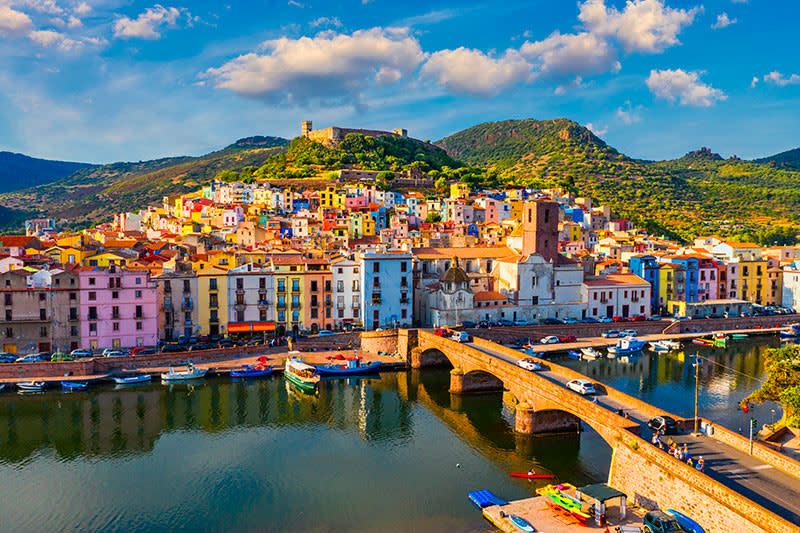 Castelsardo
CastelsardoBosa, the village of multicolored charm
Along the north-central coast of the island lies this small village of ancient origins. Crossed by the Temo River, the only navigable river in Sardinia, Bosa is renowned for its typical pastel-colored houses, wrought-iron balconies and narrow alleys in the historic center, which lend a magical atmosphere to the town, contributing to its title as one of the most beautiful villages in Italy. Named “Sa Costa,” the ancient village is located at the foot of Serravalle Hill, on which stands the Malaspina castle, built in 1112 (12th century), which is therefore about 900 years old. It was the presence of the castle that determined the urban evolution of the village. Houses began to be built at the foot of the castle to gain protection, giving rise to the medieval quarter, known precisely as “Sa Costa,” or “The Coast.” The streets of the historic center are accessible only on foot, characterized by a maze of narrow streets, alleys and charming arcades. There are numerous craft stores located in the town center, where it is possible to buy jewelry made from coral work, in the Bottega Orafa Artigiana Sotgiu in the historic center, and objects in gold filigree and filet. A recommended stop is also the shop at Esedra Sardegna. Also renowned is the quality of the oil produced in this area. The territory of Bosa includes 580 hectares of olive groves with about 60,000 trees. There are between one thousand and one thousand two hundred producers, including family-owned and small businesses. The wines of Bosa, especially Malvasia, are also highly valued. Malvasia has been awarded the DOC label. Worth visiting is the Giovanni Battista Columbu Winery with its “Aghinas” diffuse hotel and wine shop, where it is possible to taste this renowned wine. For those who love the sea and beaches, a visit to Bosa Marina, about two kilometers from the center of the village, is a must. A seaside hamlet of Bosa, here is the famous beach that is often awarded 5 sails by Legambiente for its clean waters. A kilometer of sandy beach with shallow waters is full of well-equipped establishments, refreshment spots and locations where you can practice water sports. At the end of the lido, a pier connects Bosa Marina beach with the Red Island, where an Aragonese tower stands out.




